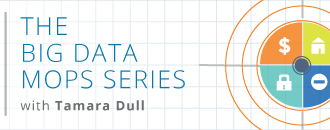 Data is everywhere. All businesses have access to it. Yet, turning data into actionable insights and becoming a data-driven business can be difficult to achieve.
Data is everywhere. All businesses have access to it. Yet, turning data into actionable insights and becoming a data-driven business can be difficult to achieve.
What does data-driven mean?
 Data is everywhere. All businesses have access to it. Yet, turning data into actionable insights and becoming a data-driven business can be difficult to achieve.
Data is everywhere. All businesses have access to it. Yet, turning data into actionable insights and becoming a data-driven business can be difficult to achieve.
What does data-driven mean?
A data-driven business utilises data to inform every business decision they make. By analysing relevant data and evaluating it they are able to form a conclusion and predict trends. Data-driven businesses ensure their company culture evolves to encourage innovation and agility. It is imperative for all employees within a data-driven business to collect, analyse and learn from data on a regular basis in order to consistently drive results and improve their skill set.
Why is it important?
By analysing data and creating actionable insights you are able to implement effective business strategies. It can help you increase your competitive advantage, guide product and/or service innovation, increase margins, minimise waste, improve customer service and help you to retain employees.
It is much more reliable to make business decisions based on evidence rather than testing an idea based on an assumption. Data can highlight and predict trends that benefit your business, along with potential issues, thus allowing you to react quickly to ensure minimal damage.
But how does a business become data driven?
Identify your business goals.
Those with usable data grow 35% faster year on year, which is why it’s important to understand what you want to achieve and what data you need to collect in order to maintain focus. For example, you may want to predict buying cycles based upon seasonal data, as this would allow you to predict cash flow and assist with the purchase of stock.
Get creative with your data.
Get creative with where you source your data from. Don’t limit yourself. There are arguments for both data quality and quantity, which is why a good mix of both internal and external data streams will help you conduct a more thorough analysis. By aligning and blending different sets of data you obtain a clearer view of your industry, enabling you to create innovative strategies in-line with customer demands.
Evaluate your current systems.
Using separate systems for different business functions can lead to inaccurate and/or duplicate data, which can skew reports. See whether the business solutions you’re currently using have the capabilities to analyse the data you input to provide the detailed information you require. You may need to update your software, purchase new software and/or integrate it with other solutions. Be sure to connect all data sources to provide analytics for all departments.
Get buy-in from the top down.
To become data-driven and to obtain optimum results, you need accurate data. The only way to achieve this is to ensure everyone is using the systems as you intended, including those in management positions. If managers lead by example it’s likely the others will follow. Be sure to implement clear processes for your entire workforce to follow.
If utilising data to inform strategic business decisions is new to your organisation, take small steps and allow one department to become data-driven initially. By doing this you can begin rolling out further data-driven strategies, technologies and practices in other departments and gain buy-in having obtained an initial set of results, with evidence that demonstrates the benefits.
Increase access to data.
Data-driven businesses use real-time data to guide every business activity. Withholding information will not help you achieve you business goals, which is why everyone within your organisation should have access to relevant data, but also access to it 24/7. This will ensure everyone is on the same page, and will provide all employees with the same opportunities to notify management of any unusual changes in the data. Increasing access to data will also help you achieve your agile business model.
Become agile.
Waiting for monthly and annual reports to be produced before making a business decision is not good enough. To remain competitive you must adopt an agile business model. Being agile will require you to respond rapidly to changes in the internal and external environment without losing momentum. The Internet is generating new types of real-time information, increasing the rate of change, therefore you need to be proactive, reacting to changes in the market before anyone else.
And finally…
Data and analytics must touch almost all aspects of your business. Technology continues to evolve providing businesses with the means to collect an increasing amount of data from more sources than ever before. Since becoming data-driven requires a cultural transformation, you may also decide to hire a data analyst to help you maintain your evolving business model, drive change, increase adoption and encourage innovation.







